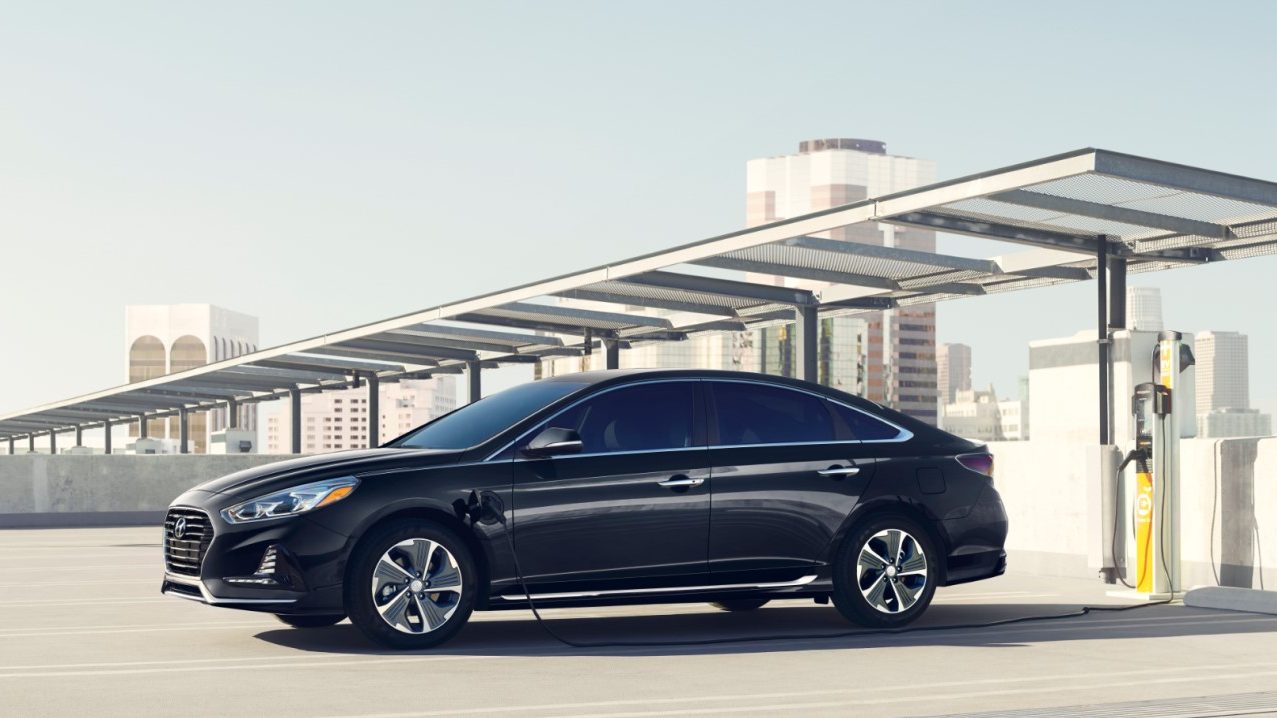

We may earn revenue from the products available on this page and participate in affiliate programs. Learn more ›
Topline: The 2018 Hyundai Sonata Plug-In Hybrid (PHEV) has received improvements that slim its price, improve interior amenities, and marginally increase its range.
What’s New: The 2018 update increases the Sonata PHEV’s all-electric range to 28 miles, up from the 2017 model’s 27, and extends Environmental Protection Agency-estimated total driving range to 600 miles, from the 2017’s 590. Its 9.8 kilowatt-hour battery can be fully charged from a 240-volt drip feed in two hours and 42 minutes. Despite these changes, the entry level 2018’s price dips by $1,350 to $33,250.

The premium trim Limited model moves in the opposite direction, its retail price tiptoeing up by $250, justified with a series of tech and safety additions. A heated steering wheel, wireless charging pad, and second-row USB port are now included in the Limited package, along with automatic emergency braking that watches for pedestrians, LED headlights, lane assist, and driver attentiveness monitoring. Hyundai asks $38,850 for the 2018 Sonata PHEV Limited, now $5,600 over base trim.
Both are still eligible for the Federal Tax Credit of $4,919, which brings the effective price of the base model to $28,331, and the Limited packaged to $33,931—both before Hyundai’s $885 delivery fee.

What You Need to Know: Sedan sales across all automakers have suffered in today’s market, in which consumers froth at the mouth for crossovers. Hyundai’s own sales figures reflect this, as the Sonata went from outselling its Santa Fe and Tucson crossover siblings by more than 15,000 and 25,000 units respectively in the first half of 2017 to falling 5,000 and 15,000 sales behind over the same period in 2018. Even competitors such as Honda with its well-received Accord are struggling to move sedans.
On the contrary, plug-in hybrids like this Sonata maintain high residual value; electric and plug-in hybrid vehicles spend less time on used car lots than most vehicles, crossovers included. It may suggest that the average new crossover buyer is less concerned with thriftiness (rising new car prices driven by crossovers support this) and can swallow the financial drain that is faster-falling value and poorer fuel economy. Used car buyers, on the other hand, typically won’t be ready to spend as much up front, or over time, and would rather have cost-effective transportation.
Despite the 2018 Sonata PHEV’s updates and strong residual value, market trends suggest there is little Hyundai can do to salvage the car’s old sales volume. New car buyers don’t want sedans, and PHEV buyers don’t want to buy new. Rock and a hard place, as they say.
